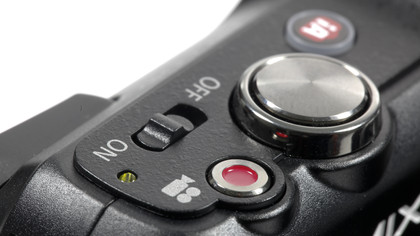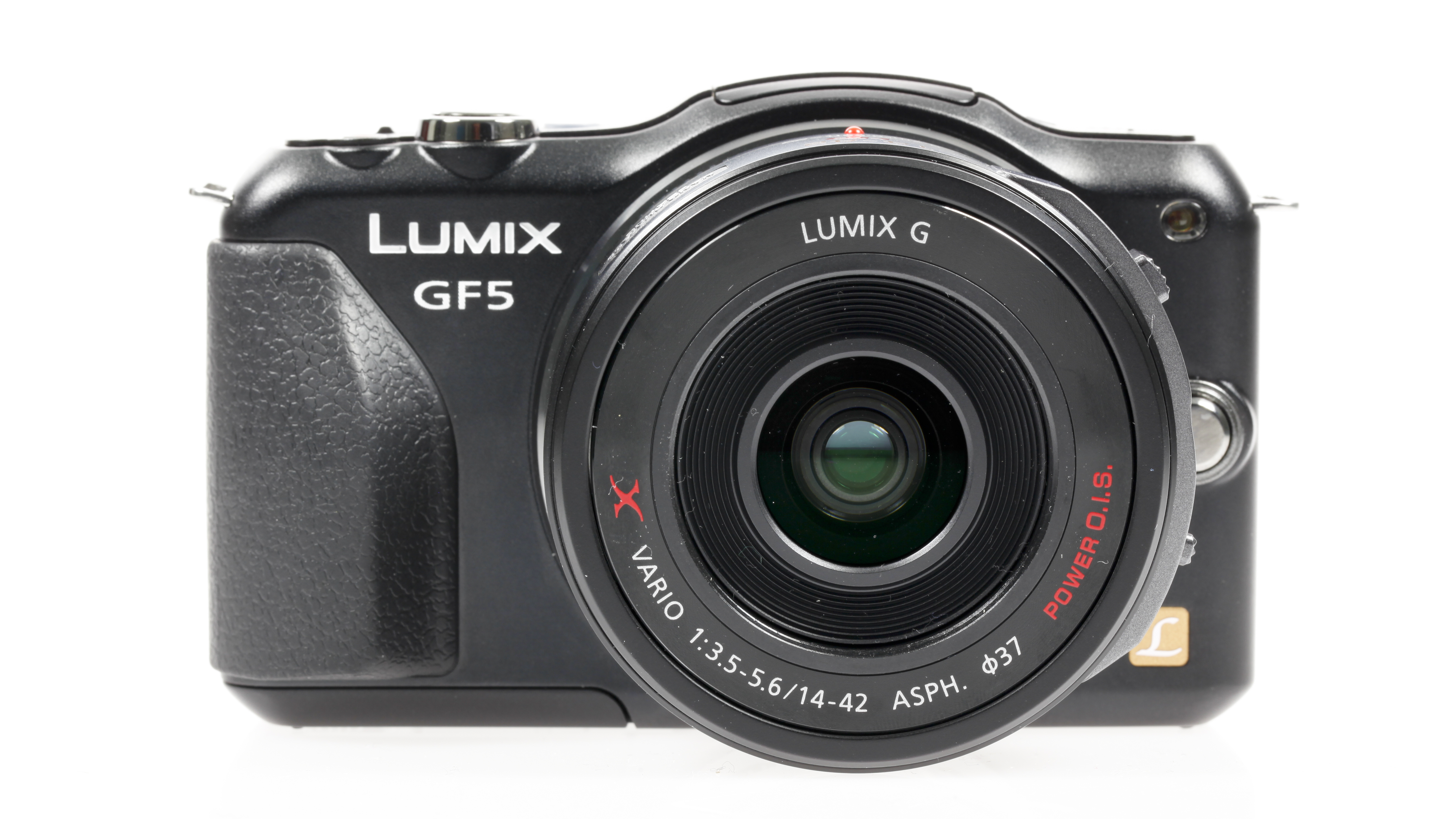Why you can trust TechRadar
As previously mentioned, the Panasonic Lumix GF5 is tiny when compared with similar cameras from both inside and outside Panasonic's range.
Side by side, the Panasonic Lumix GF5 is barely bigger than the Panasonic Lumix LX5, the company's fixed lens premium compact, which of course houses a much smaller sensor and obviously lacks the ability to interchange the lenses.
The camera is definitely jacket pocketable, if not trouser pocketable, especially when coupled with the 14-42mm retractable X lens.

However, although the camera is small, it still carries enough weight to feel nice and solid in the hands, and give it an impression of gravitas.
The newly designed handgrip, which is taken from the Panasonic GX1, is a nice addition to the camera and makes holding it a real pleasure, especially when shooting one-handed.
Since the camera is so small, there are barely any physical buttons and control dials to be found, with most of the operation conducted via the touchscreen interface.

The buttons that are present are metal, a first for the GF series, which lend it a higher air of quality. They also have a positive feel in use.
Sign up for breaking news, reviews, opinion, top tech deals, and more.
To access different modes (for instance Aperture Priority), a touchscreen mode dial can be brought up, with other options including art modes, scene modes and custom settings.
At the top of the camera is an "iA" (Intelligent Auto) button, which can be pressed to override all settings and take the camera into full automatic mode. The inclusion of a blue LED ring around this button is a nice touch, and prevents the mode accidentally being left on.

Aperture and shutter speed can be changed by scrolling with the wheel on the back of the camera (when in the appropriate shooting mode), which is quick and pleasant to use.
Any of the Panasonic Lumix GF5's 23 autofocus points can be accessed either by using directional arrow buttons built into the scroll wheel, or via the touchscreen.
The touchscreen itself occasionally proved to be a little unresponsive during our initial time with the Panasonic GF5 at the hands-on stage, and while the final production version was better, it was still slightly marred by very occasional unresponsiveness, meaning the odd double press was required.

A clear and bright display ensures that the scene is almost always viewable, also being functional at unusual angles. In bright sunshine, the camera's screen coped well in all but the very brightest of direct sunlight.
You can change the brightness of the screen yourself, or it will do it automatically, depending on the condition.
For the majority of our test we used the Power Zoom lens. Aside from the obvious size advantages, this offers other increased functionality that can be set via the camera itself, such as the ability to power up at a particular focal length.

One downside we found when using this lens with the camera in portrait orientation was that getting confused between the focusing switch and the power zoom switch was all too easy, proving reasonably annoying, if presumably something you would eventually get used to.
It's worth remembering that Micro Four Thirds-compatible lenses make Panasonic and Olympus cameras the most versatile on the compact system camera market.
Panasonic itself currently boasts 14 lenses, while of course Olympus lenses are also compatible, along with third party optics from the likes of Sigma now starting to appear on the market.
While it's likely that the average Panasonic GF5 user will not feel the need to purchase a second or third lens, it's nice to have the option, especially if you want to push your photography skills further. Or perhaps you might want to purchase a wide apertured lens to photograph indoor scenes or portraits.

Amy has been writing about cameras, photography and associated tech since 2009. Amy was once part of the photography testing team for Future Publishing working across TechRadar, Digital Camera, PhotoPlus, N Photo and Photography Week. For her photography, she has won awards and has been exhibited. She often partakes in unusual projects - including one intense year where she used a different camera every single day. Amy is currently the Features Editor at Amateur Photographer magazine, and in her increasingly little spare time works across a number of high-profile publications including Wired, Stuff, Digital Camera World, Expert Reviews, and just a little off-tangent, PetsRadar.
